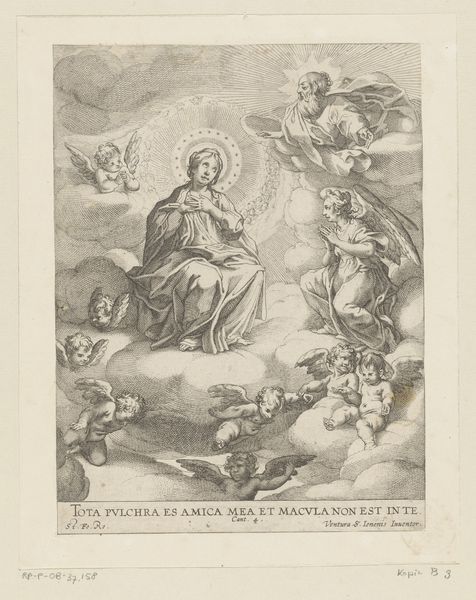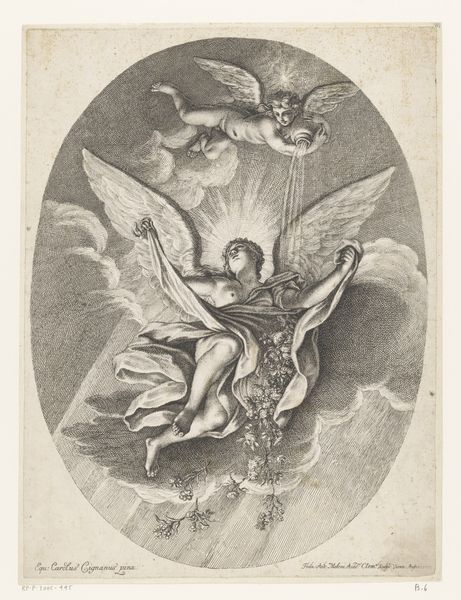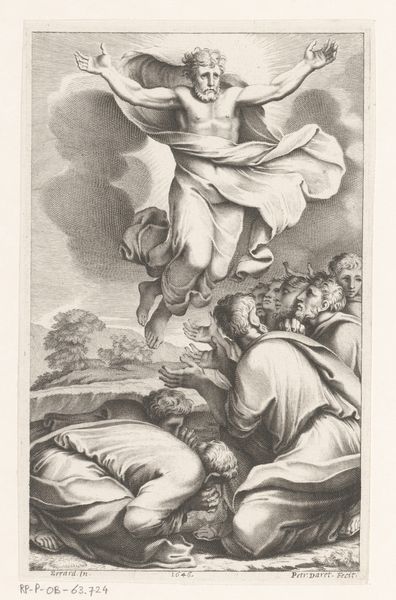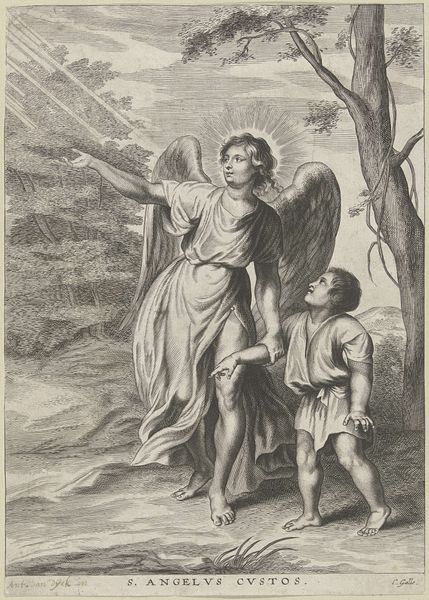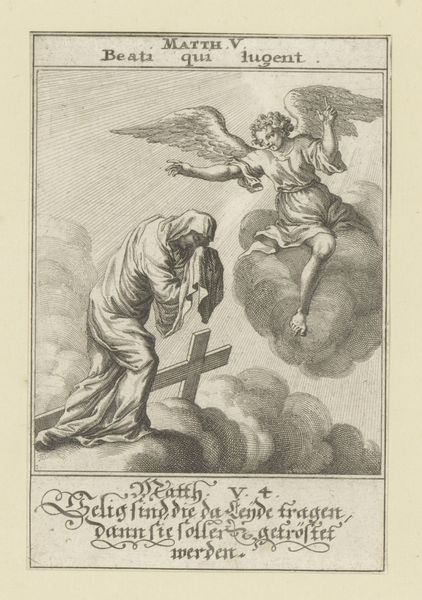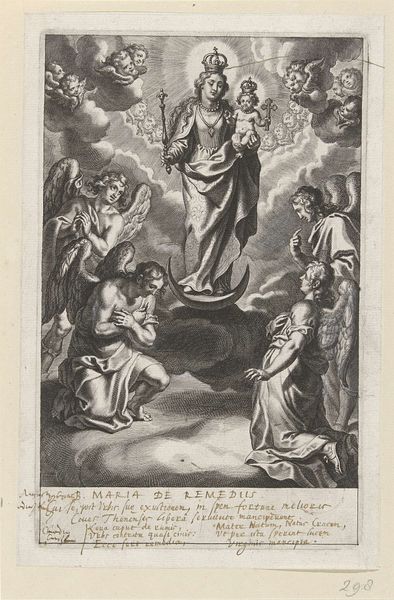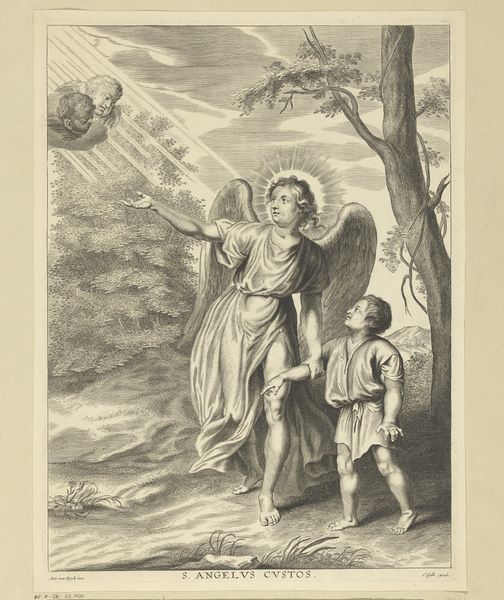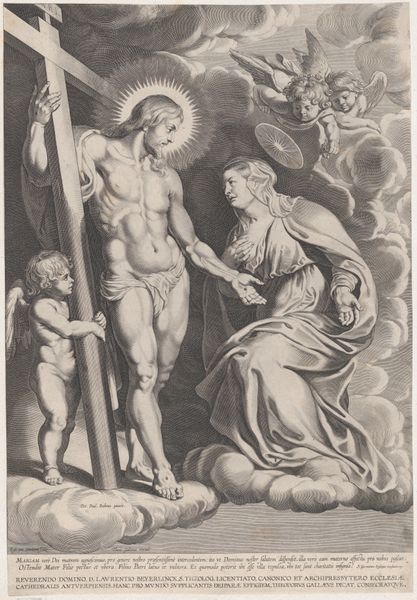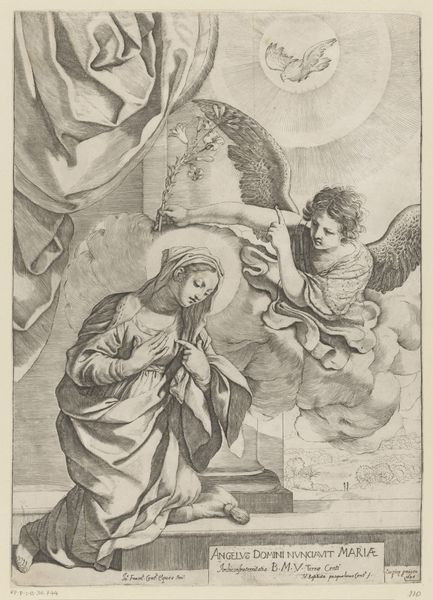
#
pencil drawn
#
comic strip sketch
#
light pencil work
#
pencil sketch
#
personal sketchbook
#
pen-ink sketch
#
sketchbook drawing
#
pencil work
#
storyboard and sketchbook work
#
sketchbook art
Dimensions: height 441 mm, width 269 mm
Copyright: Rijks Museum: Open Domain
Editor: This is "Beschermengel neemt een kind bij de hand," or "Guardian Angel Taking a Child by the Hand," by Guillaume Chasteau. It was created sometime between 1645 and 1683. It’s a detailed drawing. The angel's expression seems so gentle. What story do you think it tells? Curator: It tells a story steeped in the cultural and religious norms of its time. The image of a guardian angel reflects the strong influence of the Church on society. Notice the composition; the angel is much larger, a visual representation of power and protection. The act of 'taking the hand' is loaded with symbolic weight. Editor: So it's less about individual faith and more about the institution’s power? Curator: Exactly! Think about the role of the Church during this period. Imagery like this reinforced its role as protector, guiding individuals, especially children, along a righteous path. The public role of art at that time was didactic. Do you notice how the light draws our eyes towards the angel, not the child? Editor: That makes sense! It's promoting that idea of divine guidance through the Church, projecting both the cultural narrative and political power of religious beliefs. The angel is clearly positioned as the primary figure of influence. Curator: Precisely. Consider the proliferation of similar images during that time. It suggests a concerted effort to instill and maintain specific values. Art wasn't always 'art for art's sake,' sometimes it was propaganda. Editor: It's fascinating how an image can reflect the sociopolitical climate. I definitely see this artwork in a completely new light! Thanks for your insight. Curator: My pleasure. Analyzing the social and institutional context is key to understanding the true power of these images.
Comments
No comments
Be the first to comment and join the conversation on the ultimate creative platform.
